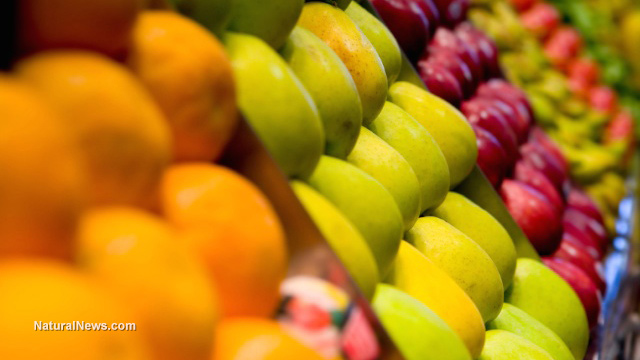
New food model sweeping Los Angeles aims to address poverty and waste management
Wednesday, September 19, 2018 by RJ Jhonson
http://www.starvation.news/2018-09-19-new-food-model-sweeping-los-angeles-aims-to-address-poverty-and-waste-management.html

Los Angeles is trying to solve two big problems at the same time and it seems to be working. A new food model, one that sees free food markets in communities in need, is taking steps to minimize hunger while eradicating food wastage.
One of the names behind the program is Food Forward, an organization based in L.A. that gathers leftover produce from different parts of the region to be delivered to neighborhoods that are most in need. Every week, the group provides more than 300,000 pounds of free fruits and vegetables directly to those who need them.
By May of 2018, Food Forward has had a total of three pop-up markets in different locations, one of which was the Watts neighborhood in southern L.A. The Watts Labor Community Action Committee collaborated in the endeavor.
And this is why the food model is proving successful. Although Food Forward plays a significant role, they are not in it alone. The effort is a collaboration between people and organizations from different sectors. Farmers, distributors, retailers, schools, chefs, consumers, and even the city itself are working together to solve the food problem in L.A.
Breana Hawkins, policy director at the Los Angeles Food Policy Council (LAFPC), calls her city’s situation “paradoxical.”
“Los Angeles sits at the heart of one of the largest food-producing regions in the world. But we also have the highest population of food-insecure people in the country,” she said.
And this is true. Feeding America created a “Map the Meal Gap” report which showed that 1.5 million people in Los Angeles County do not have enough funds to buy sufficient food. This figure means that the region is among the most food-insecure in the country in terms of population.
Fortunately, the new food model is changing all that.
One of the several reasons behind the model’s success is its appreciation for both short-term and long-term solutions. Yes, free food works now, but what about the future?
UCLA Extension offers a horticultural and gardening certificate program that teaches several practical classes, including urban food production and container gardening. The program is seeing rising success, with enrollment rates doubling just the past year. (Related: Growing for a better world: The 5 benefits of organic gardening.)
To encourage people to use empty lots for food, Los Angeles County is also offering tax incentives to property owners who will permit agricultural crops to be planted in their empty lots. This measure will see vacant, unused properties utilized for purposes that will benefit the community, especially in areas like South and East L.A.
Recognizing that the problem cannot be solved from just one front, businesses are taking steps to minimize food wastage – and some are earning more in the process, too. For instance, Salt & Straw, a local business, partnered with Food Forward to create three new ice cream flavors using the fruits that the latter donated. A local brewery, Smog City, used Food Foward’s donated kumquats to create its new Kumquat Saison.
Pulp Pantry, another local company, is seeing opportunity where others see disposables. They are collecting pulp from juicers in the area and turning them into edible food.
Its emphasis on community is one of the new model’s most remarkable characteristics. While most of the focus has been on saving food, some organizations are looking for ways to save people. L.A. Kitchen, for instance, provides a number of programs, including one that offers culinary training to people homeless people, those in foster care, or those who have been incarcerated. The organization’s slogan seemingly describes L.A.’s move the best: “neither food nor people should go to waste.”
Learn more about food shortage at FoodCollapse.com.
Sources include:
Tagged Under: Tags: community, food insecurity, food model, food shortage, food supply, food wastage, hunger, Los Angeles, meal gap, poverty, society, starvation





